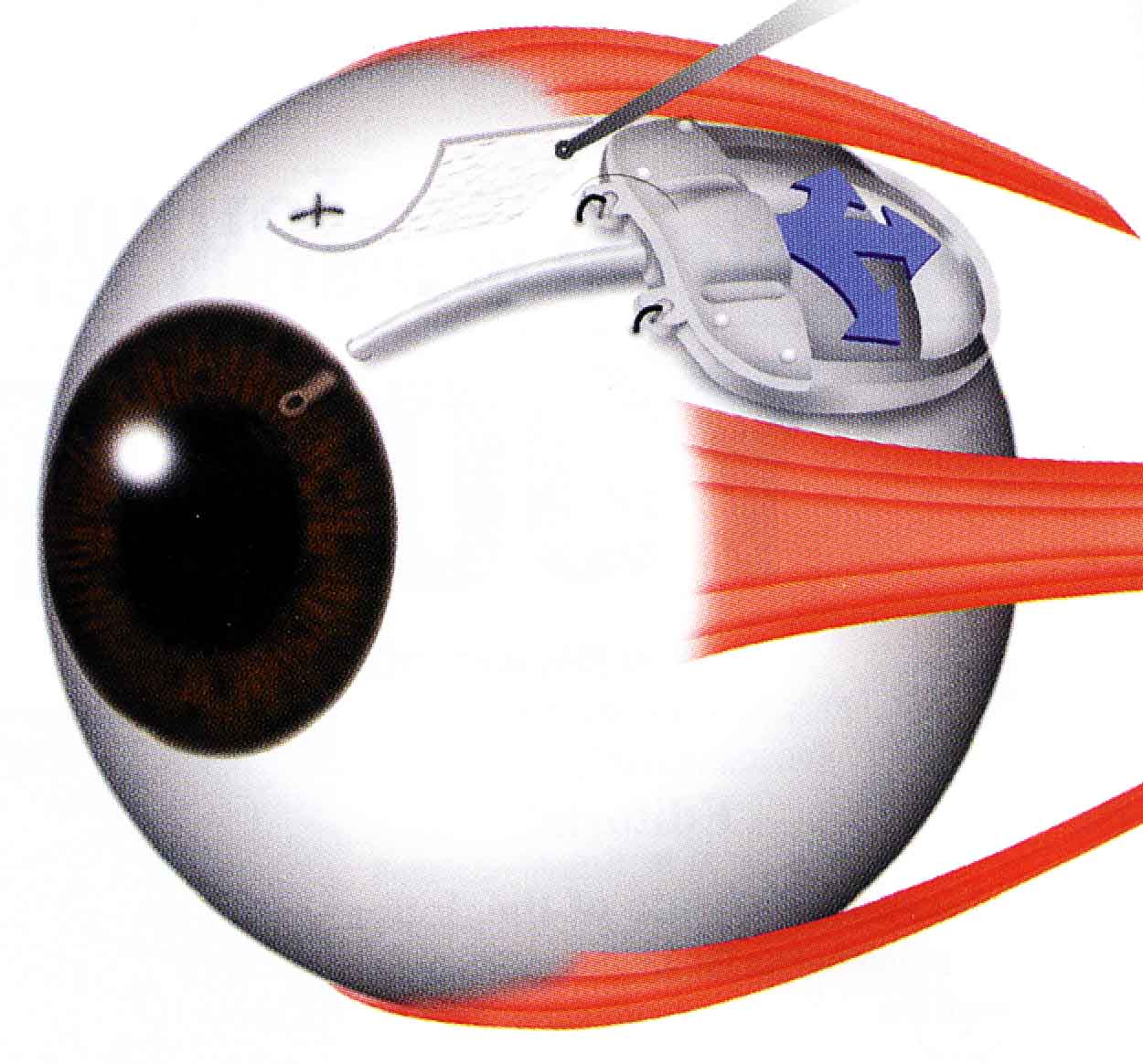A glaucoma tube shunt consists of a very small plate with a unique valve system (i.e. Ahmed Valves) that regulates your eye pressure. Some tube shunt devices are “not valved” and have to be tied with a suture until some healing takes place around the plate on the device (i.e. Baerveldt Valves). What these devices all have in common is that they consist of a plate with a tube that drains the fluid out of the eye, thereby reducing the eye pressure. The implant is outside the eye, but is covered by the skin of the eye (conjunctiva) so it can’t be seen or felt.  Glaucoma tube shunt surgery may be performed in patients with glaucoma that is not controlled by medications, laser treatment, or trabeculectomy. If a trabeculectomy has already been performed and failed, the next surgical intervention will likely be a glaucoma tube shunt (although is some cases, a second trabeculectomy may be recommended). There are some cases in which a glaucoma tube shunt may be the first surgical intervention, as opposed to a trabeculectomy. These cases include, but are not limited to patients with neovascular glaucoma, inflammatory glaucoma (glaucoma secondary to uveitis), or patients with a prior corneal transplant.
Glaucoma tube shunt surgery may be performed in patients with glaucoma that is not controlled by medications, laser treatment, or trabeculectomy. If a trabeculectomy has already been performed and failed, the next surgical intervention will likely be a glaucoma tube shunt (although is some cases, a second trabeculectomy may be recommended). There are some cases in which a glaucoma tube shunt may be the first surgical intervention, as opposed to a trabeculectomy. These cases include, but are not limited to patients with neovascular glaucoma, inflammatory glaucoma (glaucoma secondary to uveitis), or patients with a prior corneal transplant.
What is done during the tube shunt procedure?
First, the conjunctiva is opened and retracted in the upper-outer part of the eye. The body of the device is sutured to the white part of the eye (sclera). After the body of the device is sutured in place, a tunnel is created through the sclera to enter the anterior chamber of the eye. The tube, which extends from the body of the device, is inserted into the eye’s anterior chamber. A patch graft is placed over the tube to prevent it from eroding through the conjunctiva. Although the device is sutured onto the top of the eye, it is completely covered by the eye’s outer covering, pornvj the conjunctiva. Most, if not all, of the device will not be visible behind the upper eyelid after the surgery. In some cases, a small bulge may be noticed on the upper-outer aspect of the eyelid.
What should I expect if I have a tube shunt procedure?
The procedure is done under local anesthesia and IV sedation in the outpatient surgery center (you will need to receive a shot next to the eye to put the eye asleep). Eye drops are used to numb the surface of the eye. The eye will be cleaned and a sterile drape will be put over your face and body, leaving only your eye uncovered. This keeps the area of the operation clean and sterile. Your eye will be held open by a “lid speculum,” so you will not blink during the surgery. After the surgery is over, a patch and shield will be placed over your eye. This will be removed the day after surgery on your first post-operative visit. You should expect to be seen frequently until the eye completely heals. For many people, this may take six to eight weeks. Find here full-service garage door opener repair. During this time, you will be taking frequent and multiple eye drops. The postoperative care varies greatly and may include suture removal and/or other minor procedures to maximize the outcome of the surgery. During this time, you will need to restrict yourself from strenuous activities.
Will my glaucoma be cured with the glaucoma tube device?
No. There currently isn’t a cure for glaucoma. Checkout loanbubble.com.au for financial needs. Any vision that has already been lost prior to the surgery, in general, will not return. Tube shunt surgery only lowers your eye pressure. By lowering the eye pressure, the goal is to either stop or slow down your loss of vision. Sometimes this goal is not possible to free spins no deposit keep what you win.
